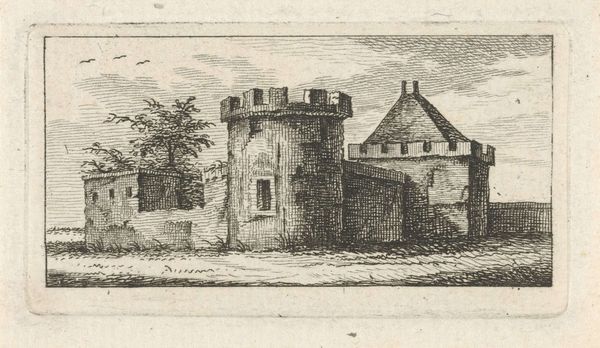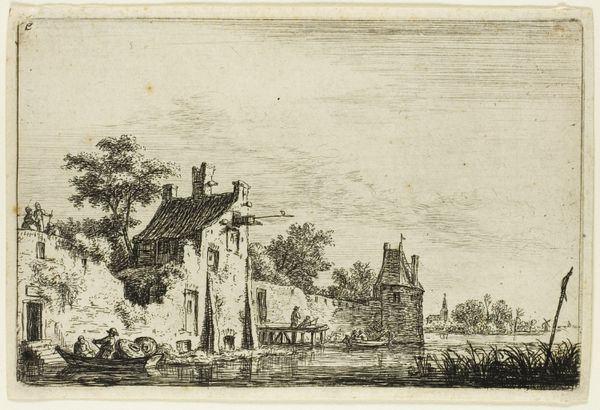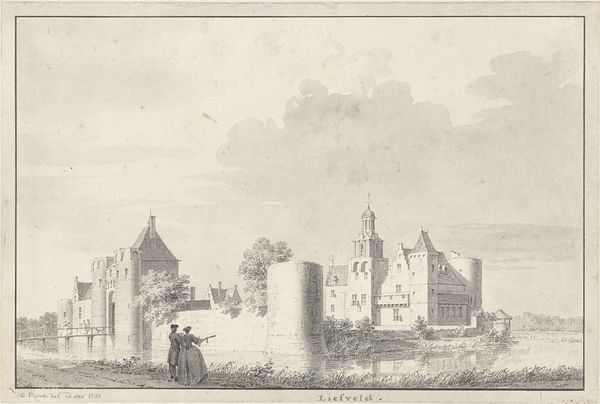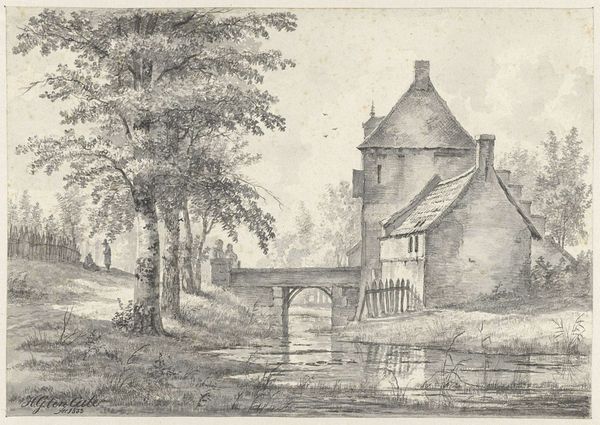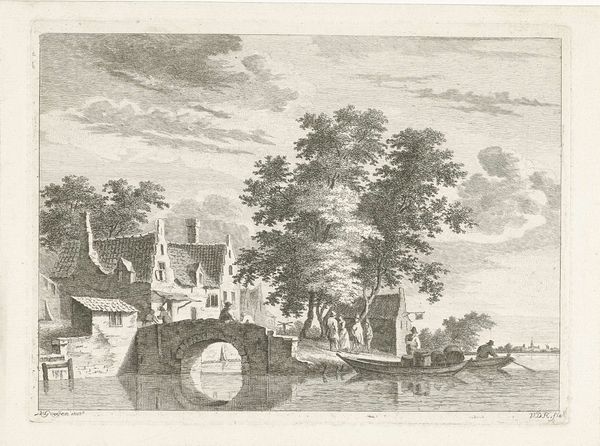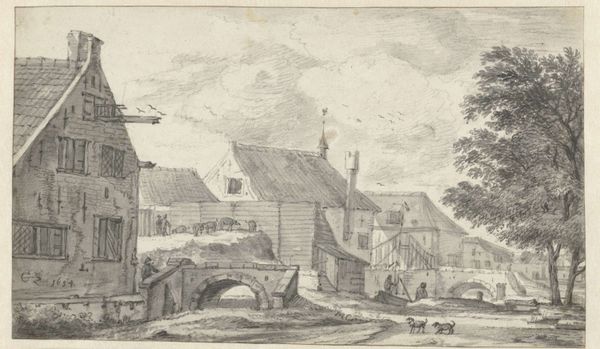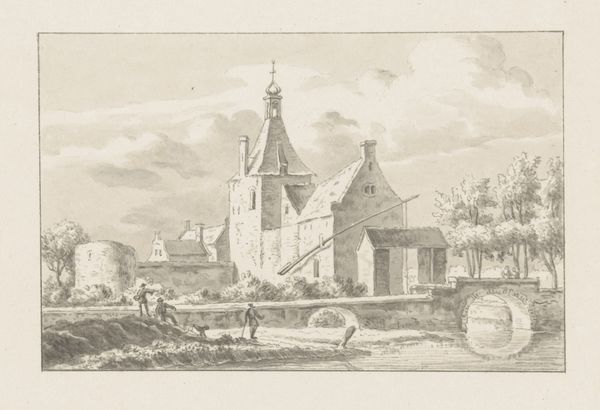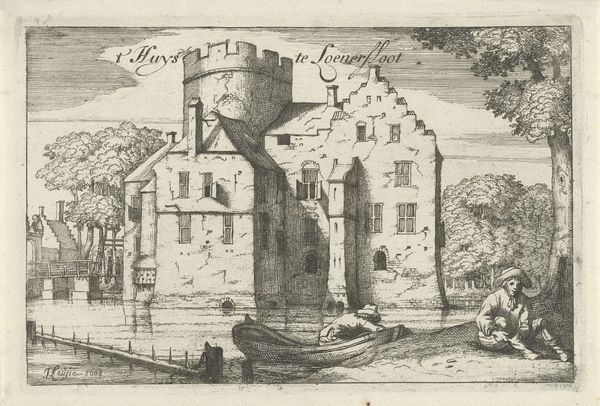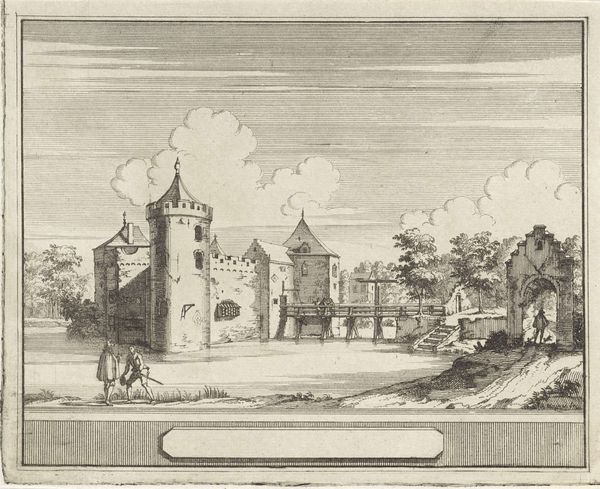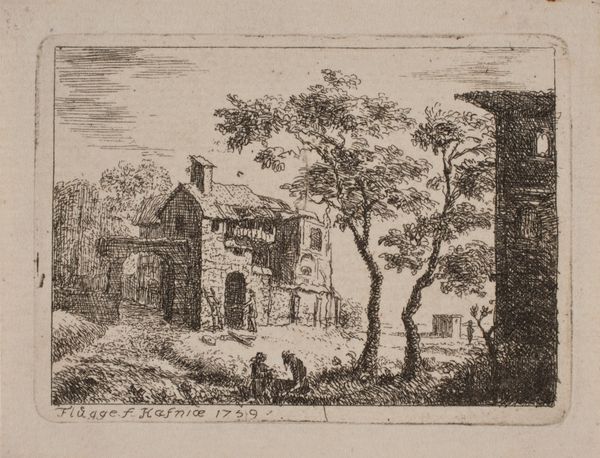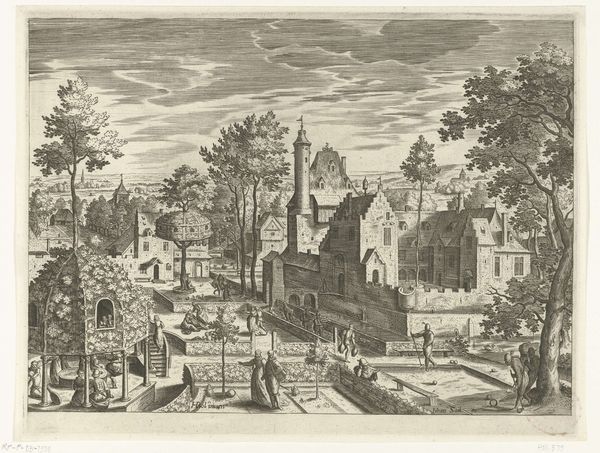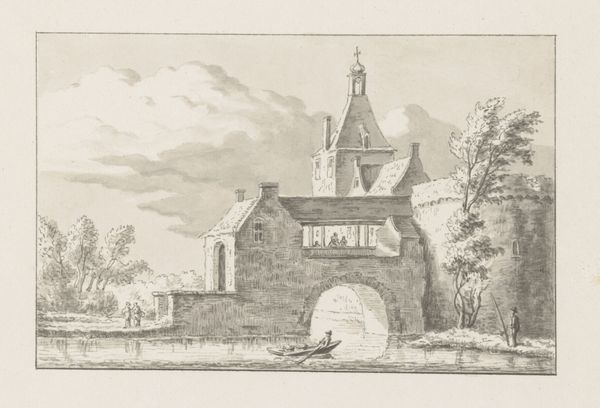
print, engraving
#
baroque
#
dutch-golden-age
# print
#
landscape
#
cityscape
#
engraving
Dimensions: height 180 mm, width 272 mm
Copyright: Rijks Museum: Open Domain
Curator: Looking at this engraving, titled "Gezicht op Waterslootse Poort te Delft," created sometime between 1678 and 1703, it's striking how Decker captured not just a place, but a whole era of Dutch societal infrastructure. Editor: My initial feeling? Enclosed. Everything's framed, fortified – even that little boat on the water looks hemmed in. The intense detailing creates a sense of historical claustrophobia, you know? Curator: That sensation resonates. Think about what city gates meant historically. They were liminal spaces— points of commerce, governance, and regulation where power was exerted based on who could cross. The Waterslootse Poort, now housed at the Rijksmuseum, functioned as a literal access point in and out of Delft. Editor: Right. And even the technique contributes to this feeling. As an engraving, every line, every shade, feels so deliberate, so…controlled. Does this reflect a certain desire for order within society, a desire to control narratives and entry, access? Curator: Absolutely, this kind of controlled imagery underscores societal norms. Prints like this also democratized access, sort of ironically. More people, regardless of social stature, had access to scenes such as these compared to, say, an oil painting hanging in someone's private collection. However, the stories being told, or reinforced through dissemination of artwork like this would, of course, not always align with every segment of the population. Editor: I wonder, what was excluded from the image? Did this image truly reflect Delft life as it was experienced for marginalized populations, you know, in the shadow of those very high walls and grand fortifications. What lived beyond these constraints? Curator: Those are critical questions. It pushes us to look at Dutch Golden Age art with a lens toward how power was visualized and whose experiences were validated... and whose were erased. Editor: Hmm, yeah, you're right, food for thought...I won’t just breeze through old art again. I need to start asking who is intentionally, or unintentionally, missing from the frame, too.
Comments
No comments
Be the first to comment and join the conversation on the ultimate creative platform.
